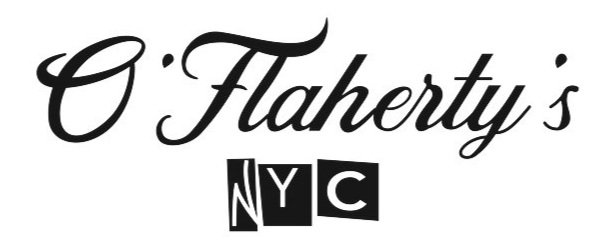Christian Ludwig Attersee
Snappy Armpits And More
November 18 - January 30 2023-2024
CHRISTIAN LUDWIG ATTERSEE : BELOVED BLACK SHEEP of VIENNA
Vienna has nurtured an obscene number of boundary-pushing artists. Since the late nineteenth century, Austrian radicals and renegades have propelled European culture to new transgressive heights: think of the sexual provocations of Egon Schiele and Oskar Kokoshka, or the blood-soaked transgression of Wiener Aktionismus (Otto Mühl, Herman Nitsch, et. al.). Austria did not just produce bad boys–a whole cadre of revolutionary women artists (Maria Lassnig, Valie Export, et. al) equally contributed to the more than a century of edgy experimentation.
From this radical ferment emerged Christian Ludwig Attersee (born 1940, lives and works in Vienna), a rebel painter, musician, and performer who drew upon his Viennese DNA to forge an unclassifiable art practice and a commitment to pushing creative boundaries. A black sheep who emerged from a transhistorical family tree of radicals, Attersee passed through multiple scenes including Aktionismus, and Fluxus, as well as experimental film and music circles to emerge as a singular artist in his own right.
While Attersee remains under the radar in an American context, Attersee is considered a legendary figure in Europe. He forged a singular visual language from the early 1960s that anticipated the Capitalist Realist and Euro-pop mash-ups of Sigmar Polke, Martin Kippenberger, and Michel Majerus. As the first major solo exhibition in New York, O'Flaherty's survey of Christian Ludwig Attersee’s wild pictorial oeuvre argues for his historical re-evaluation. It positions Atersee as a transformative influence on late twentieth and early twenty-first-century painting.
WEIHNACHTLICHES STILLEBEN MIT DACKELSTELZE (Christmas Still Life With Daschund Wagtail), 1969 Acrylic and varnish on canvas 105 x 105 cm
DREI MÄDELS NR. 2, (Three Girls) 1968 Mixed media on board 64.5 x 47 cm
WETTERKRUG (Weather Jug), 1999 Acrylic on canvas, wood frame 201 x 201 cm
DIEBIN (Thief) 1989 Acrylic and varnish on canvas and wood frame 163 x 213 cm
SCHÖNLING MIT GRIFF (Baby With Handle), 1968 Mixed media on board 84 x 64 cm
FLEISCHSCHNUPPENPAAR (Meat Sniffing), 1974 Mixed media on board 62.5 x 44 cm
MILCHAUSSTELLUNG (Milk Exhibition) 2004 Acrylic, varnish and colored chalk on canvas, wood frame 118 x 118 cm
HUNDHUTTEN UND FOXLRUCKENSCHMUCK MIT LEUCHELEMENTEN (Dog Houses and Fox Back Jewelry with Light-up Elements) 1968 Mixed media on board 64 x 46 cm
JUNGES WEISS (Boys Know), 2004 Acrylic on canvas, wood frame 201 x 201 cm
GIRAFFEN UND FISCHE NR.3 (Giraffes and Fish), 1968 Mixed media on board 64 x 46 cm
JAGDWARTEN, 1980 Acrylic and varnish on canvas and wood frame 120.5 x 95.5 cm
DAS HAREMSTÜCK (The Harem Piece), 1981 Acrylic and varnish on canvas, wood frame 118 x 118 cm
TÜRKENTÜCKE (Turkey), 1977 Mixed media on board 62.5 x 44 cm
WETTERBLÜTE, 1987 Acrylic and varnish on canvas, wood frame 118 x 118 cm
GEKOCHT UND UNGEKOCHT (Cooked and Uncooked), 1965 Collage with magazine illustrations on board 103 x 74 cm
SCHMECKT’S (Tastes), 1965 Collage with magazine illustrations and colored pencil on board 103 x 74 cm
WETTERSCHMIEDE (Weather Forge), 1997 Acrylic and varnish on canvas, wood frame 118 x 118 cm
BISSIGE ACHSEL MIT ZUNGENSCHMUCK NR. 2 (Snappy Armpit With Flick of the Tongue), 1972 Mixed media on board 64 x 45 cm
BISSIGE ACHSEL MIT ZUNGENSCHMUCK NR. 3 (Snappy Armpit With Flick of the Tongue), 1972 Mixed media on board 64 x 45 cm
OBJEKT VAGINA, 1966 Wood, metal feathers, cellophane foil and silk 14 x 14 x 14 cm / each
WASSERSAGE (Water Legend), 2020 Acrylic, varnish and colored chalk on canvas, wood frame 118 x 118 cm
THE UNNAMED FATHER OF 21st CENTURY ZEITGEIST
Christian Ludwig Attersee was trained at the Vienna Akademie für angewandte Kunst in the late 1950s. After briefly collaborating with his Aktionismus contemporaries, Attersee asserted his artistic and intellectual independence and founded a group that was later dubbed “New Austrian Painting.”
Unlike American Pop artists of the 1960s, Attersee was not interested in commenting on capitalist consumption or critiquing popular culture. Free from critical ideologies, Attersee could disregard distinctions between “high” and “low,” art and entertainment to create a pictorial universe that strings together a jarring web of symbols that become a glistening visual orgy. In each painting, Attersee weaves together the flotsam and jetsam of nature and culture to create ecstatic combinations. Some thirty examples of his paintings from 1965 till today will be included in O'Flaherty's survey. It is a fallacy to place Attersee in the lineage of Pop–instead, his visual cacophony of improbable symbols and snippets of cultural appropriation emerges as its own thing: he is a maestro of European postwar visual culture. Attersee is the unnamed father figure of countless contemporary painters working today, including the exhibition’s co-curator and co-founder of O'Flaherty's Jamian Juliano-Villani. “He is a genius, we have decided he is more advanced than us.”
Despite countless achievements in his 80-year lifespan–including his inclusion in Documenta 6 in 1977 and the representation of Austria at the Venice Biennale in 1984–this exhibition makes the case for Attersee’s immediate and urgent art historical reevaluation.
O'Flaherty's is honored to present Christian Ludwig Attersee in conjunction with Galerie Gmurzynska whose uptown space will simultaneously host Attersee. These exhibitions will accompany a fully illustrated monographic catalogue published by the Kunstforum Wien with essays by Max Hollein, Ingried Brugger, Daniela Gregori, and Rainer Metzger
-Alison M. Gingeras


































